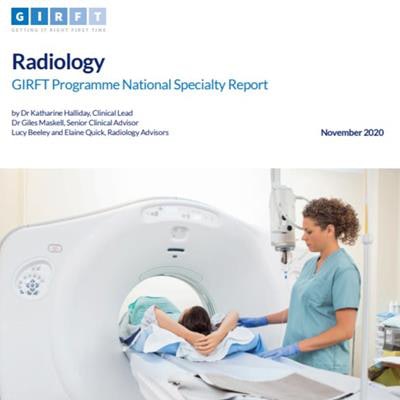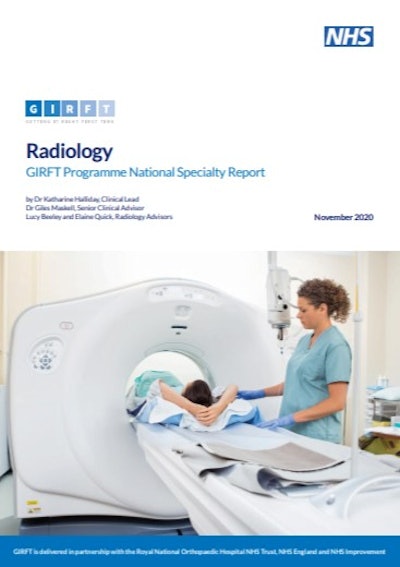
A group of senior U.K. radiologists has unveiled a report about imaging services in England, called Getting It Right First Time (GIRFT).
 Image courtesy of GIRFT.
Image courtesy of GIRFT.The initiative was led by consultant radiologist Dr. Katharine Halliday of Nottingham and supported by Dr. Giles Maskell, past president of the U.K. Royal College of Radiologists (RCR) and AuntMinnieEurope.com columnist, and radiology services experts Lucy Beeley and Elaine Quick. The team spent more than two years investigating variation among National Health Service (NHS) imaging services, analyzing data, and visiting hundreds of hospital radiology departments. They also consulted with the RCR, which has welcomed the report.
The goal of the project is to make radiology services more patient-centric and accessible. Major themes include the need for standardized and streamlined radiology pathways and systems, as well as efficiencies in workload and workforce management. The authors also cover the impact of COVID-19 on services and aim to build on previous radiology investigations.
In patient-focused recommendations, they recommend the ongoing creation of community-based diagnostic hubs that were recently promised by NHS England/Improvement4 (NHSE/I), online booking and extended hours to suit outpatient appointments, as well as dedicated provision of interventional radiology facilities.
Short-term recommendations include the following:
- Creating imaging networks in line with NHSE/I's target of 18 nationwide networks
- Continuing ongoing work by imaging community stakeholders to review NHS coding for diagnostic and interventional radiology and end multiple NHS data submissions
- Progressing national targets for time from imaging test-to-report by trusts and NHSE/I over the next six months
- All radiology services working towards providing dedicated facilities for interventional radiology day-case patients. Further guidance is due from GIRFT in the next 12 months.
Medium- and long-term GIRFT recommendations included the following:
- The GIRFT, the RCR, and the Society of Radiographers (SoR) should progress national protocols for imaging common conditions over the next 18 months.
- The RCR should progress standard definitions and expected productivity for radiologists over the next 18 months.
- The RCR and SoR should progress standards for radiographers and radiology trainees over the next 18 months.
- NHSE/I should create real-time demand management tools for diagnostic and interventional workflows over the next two years.
The report includes a total of 20 headline recommendations, along with 50 supporting actions to be undertaken by NHS trusts, the GIRFT team, NHSE/I, the RCR, and imaging community stakeholders.
The authors also emphasized that NHS imaging cannot provide the best possible service for patients or clinicians without more staff and resources.
"Unless there is investment in increasing staff numbers overall, it will not be possible to provide the quality of service that patients expect, that other departments require and that radiology teams wish to deliver," the authors wrote.
The full report can be downloaded via the GIRFT website.



















